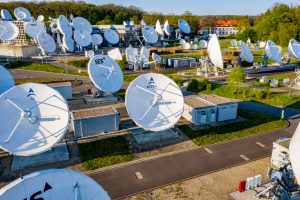
After more than 40 years of operation, DTVE is closing its doors and our website will no longer be updated daily. Thank you for all of your support.
SES confirms it is in merger talks with Intelsat

Satellite operator SES has confirmed it is in merger talks with rival Intelsat.
“In response to rumours in the market, SES S.A. confirms that the company has engaged in discussions regarding a possible combination with Intelsat. At this stage, there can be no certainty that a transaction would materialise. The Board of SES remains fully committed to acting in the best interest of SES and its shareholders,” the company said.
The statement confirmed an earlier report by Bloomberg that the pair were in talks.
A merger of the two companies, both of which are Luxembourg-based, would create a satellite industry behemoth valued at over US$10 billion including debt, generating around US$4 billion in revenues.
According to Bloomberg, SES is aiming to reach an agreement with Intelsat, which so far has not publicly commented, within the next few weeks.
Speculation about a possible combination of the pair is not new. The FT reported last year that they were in merger talks. That report followed the news that SES’s European rival Eutelsat had struck an agreement to acquire low-Earth orbit satellite communications operator OneWeb in deal that valued the latter at €4.3 billion.
Consolidation in the satellite sector reflects profound shifts in the market away from legacy geostationary orbit-based video applications towards broadband and connectivity delivered via low-Earth orbit or medium-Earth orbit constellations.
While the merger of Eutelsat and OneWeb has met with investor scepticism, fuelled buy concerns about the he scale of the necessary financial commitments to create a new LEO satellite constellation, SES nd Intelsat are both traditional geostationary Earth orbit satellite providers with legacy video businesses but have decided to invest in medium Earth orbit (MEO) constellations to deliver an expected upsurge in demand for satellite-enabled data communications rather than go down the more capital-intensive LEO route.
SES and Intelsat are also the major beneficiaries of the clearing of C-band spectrum in the US, which will ultimately net the pair a combined total of around US$9 billion.

